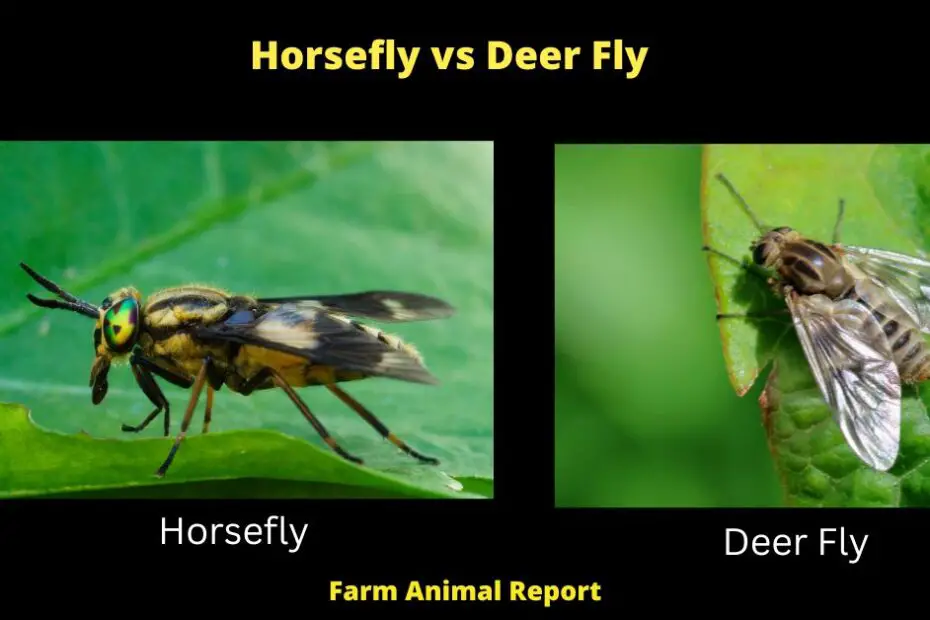Horsefly vs Deer Fly – Summertime is fly season. And, of the two types of flies that plague us during these hot months, which one is more annoying? That’s the question we’re going to answer in this blog post. Horseflies and deerflies are both bloodsucking insects that can be a nuisance, but they have different habits and preferences. So, which one is worse? Let’s take a closer look!
Horsefly vs Deer Fly
If you’ve ever been outside in the summertime, chances are you’ve had the unfortunate experience of being bitten by a horsefly or deer fly. But what’s the difference between these two pesky insects? And more importantly, how can you get rid of them? Read on to find out.
Horsefly vs Deer Fly: What’s the Difference?
Both horseflies and deer flies are members of the Tabanidae family, which contains about 4,000 species of bloodsucking insects. Both insects are attracted to carbon dioxide, so they are often found near areas where there is a lot of activity, such as farms, hiking trails, and parks. However, there are some key differences between these two types of flies.
For starters, deer flies are much smaller than horseflies. They also have patterned wings, whereas horseflies have solid-colored wings. Another difference is that deer flies bite by cutting into the skin with their sharp mouthparts, whereas horseflies actually tear chunks out of skin. Ouch!
Deer flies are also more colorful than horseflies, with patterned wings that often feature yellow or green stripes. Horseflies, on the other hand, are typically dark-colored with dull-colored wings. Another difference is that deer flies have teeth-like structures on their mouths that they use to slice through skin, while horseflies have a saw-like mouthpart that they use to tear open skin.
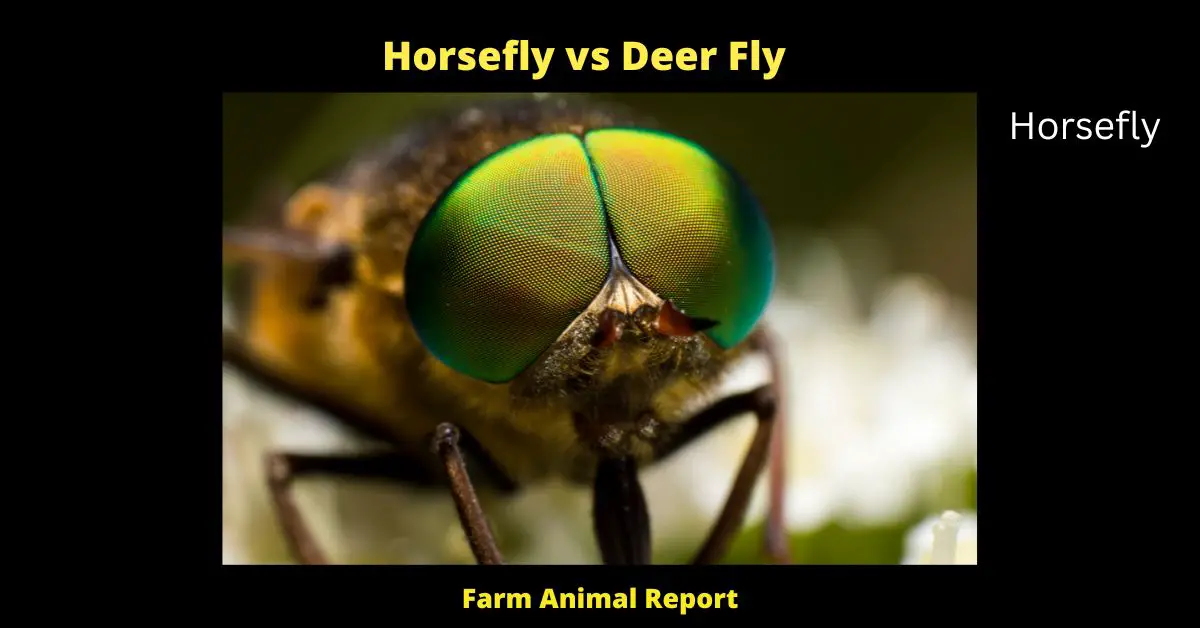
Finally, deer flies are more active during the day than horseflies, which tend to bite at dawn and dusk. This means that if you’re trying to avoid being bitten by either type of fly, you’re better off doing so during the daytime hours.
Technical Name and Description of a Deer Fly
The deer fly (Chrysops relictus) is a small to medium-sized fly that is found in wooded areas across North America. The deer fly is dark brown or black in color, with clear wings and a distinctive pattern of dark and light bands on the abdomen. The adult deer fly is typically 6-10 mm in length, with a wingspan of 12-18 mm.
The deer fly is a blood-feeding insect, and females will bite humans and animals in order to obtain the protein needed to produce eggs. Deer flies are active from early spring to late fall, and their bites can cause pain, swelling, and topical anesthesias.
While deer flies do not transmit any diseases to humans, their bites can be painful and irritating. If you are bitten by a deer fly, it is important to clean the wound thoroughly and seek medical attention if necessary.
Technical Name and Description of a Horse Fly?
The horse fly is a member of the family Tabanidae and there are about 4,000 species worldwide. The family is divided into two subfamilies, Pangoniinae and Tabaninae. Most horse fly species are in the subfamily Tabaninae. The female horse fly needs blood to mature her eggs. She will cut a slit in the animal’s skin and then lap up the blood that oozes out.
This process can be painful for the horse or any other animal and it can also lead to infection. To prevent this, the horse fly has a sharp knife-like mouthpiece that she uses to make the cut. The male horse fly does not bite animals, but he will feed on flower nectar. Horse flies are found all over the world, except in Antarctica.
They are most active on warm days with little wind. You can often find them near water or wet areas like marshes or swamps. When they are not feeding, they rest on vegetation. Some species of horse flies can carry diseases like anthrax, which they can transmit to humans and animals through their bites.
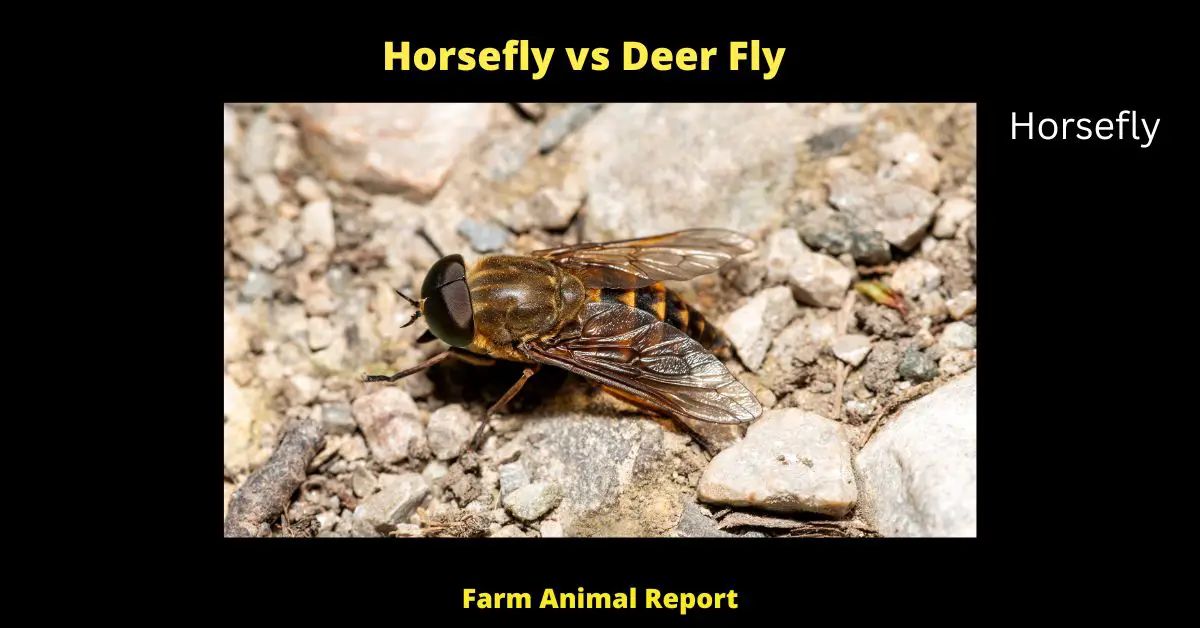
Difference Between horsefly vs deer fly bites
There are two main types of fly bites – horsefly and deer fly. Here’s a breakdown of the differences between the two:
– Horsefly bites are more painful than deer fly bites. This is because horseflies have razor-sharp teeth that they use to slice through your skin before they start sucking your blood.
– Deer fly bites are itchier than horsefly bites. Deer flies inject a small amount of saliva into their victim’s skin which causes a reaction and makes the area around the bite swell up and itch.
– Both horsefly and deerfly bites can become infected if they’re not treated properly. If you notice any redness, swelling, or pus around the bite, make sure to see a doctor as soon as possible.
Horseflies are attracted to movement, so they’re more likely to bite humans and animals that are moving around. Deer flies, on the other hand, are attracted to carbon dioxide, so they’re more likely to bite animals that are standing still.
Horseflies typically bite humans on the arms or legs, while deer flies typically bite humans on the head or neck. This is because horseflies can’t bite through clothing, while deer flies can.
Anatomy of a Deer Fly Bite
Deer flies are members of the housefly family. They get their name from their preferred host, the white-tailed deer. However, they will also bite humans if given the chance. Deer flies have sharp mouths that they use to pierce skin and suck blood. They can also transmit diseases through their bites, including Lyme disease and tularemia.
The deer fly will use its saw-like mouthparts to slice through your skin. This can be quite painful, particularly if the deer fly is large. Once it has made a small opening, the deer fly will then insert its proboscis, a long, narrow tube that it uses to suck up blood.
As the deer fly feeds, it will also inject saliva into your wound. This saliva contains anticoagulants that help to keep your blood flowing freely. In some cases, this can cause an allergic reaction or even lead to an infection.
What Diseases can a Deer Fly Bite Transmit?
- Lyme
- Rocky Mountain Spotted Fever
- Tularemia
- Gastrointestinal Illnesses
Deer fly bites can transmit a number of diseases, including Lyme disease and Rocky Mountain spotted fever. Lyme disease is caused by a bacteria that is transmitted by the bite of an infected deer tick.
Symptoms of Lyme disease include fever, headache, fatigue, and a rash. If left untreated, Lyme disease can cause serious health problems. Rocky Mountain spotted fever is another tick-borne disease that can be transmitted by deer fly bites.
Symptoms of Rocky Mountain spotted fever include fever, headache, nausea, and a rash. Like Lyme disease, Rocky Mountain spotted fever can cause serious health problems if it is not treated promptly. As a result, it is important to be aware of the potential risks associated with deer fly bites.
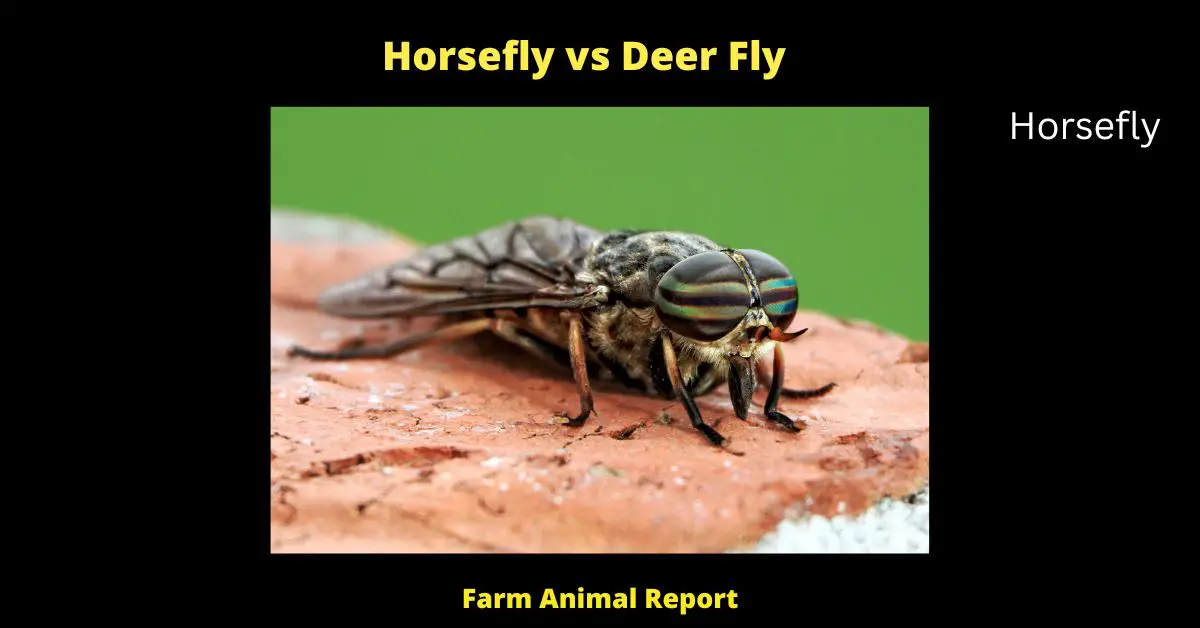
What Are Deer Fly Bite Symptoms?
- Red Swollen Aera
- Hives
- Fever
- Nausea
- Hot to Touch
- Itchy
Deer fly bites can be painful and itchy, causing a red, swollen bump to form on the skin. In some cases, the bite may also be accompanied by hives or a fever. The symptoms of a deer fly bite usually appear within 24 hours of being bitten and typically last for several days.
Deer flies are most active during the summer months, so it’s important to take measures to avoid them if you’re spending time outdoors. Wearing long sleeves and pants can help to keep deer flies from biting, as can using insect repellent. If you do get bitten, applying a cold compress to the affected area can help to reduce swelling and discomfort.
What Are Deer Fly Bite Treatments?
There are a few different ways you can treat a deer fly bite. First and foremost, you’ll want to clean the wound with soap and water. This will help to prevent infection. You can then apply an antibiotic ointment, if desired.
If the bite is particularly uncomfortable, you can try taking an antihistamine or applying a topical corticosteroid cream. Finally, if you have any signs of infection (such as redness, swelling, or pus), you should see a doctor as soon as possible.
With proper treatment, deer fly bites usually heal within a week or two.
- Clean with Soap and water
- Topical Corticosteroid creme
- Antibiotic Ointment
- Over the Counter Antihistimine
- Ibuprofen or another over-the-counter pain reliever
Generally Deer Fly Bites will Heal in a couple of days
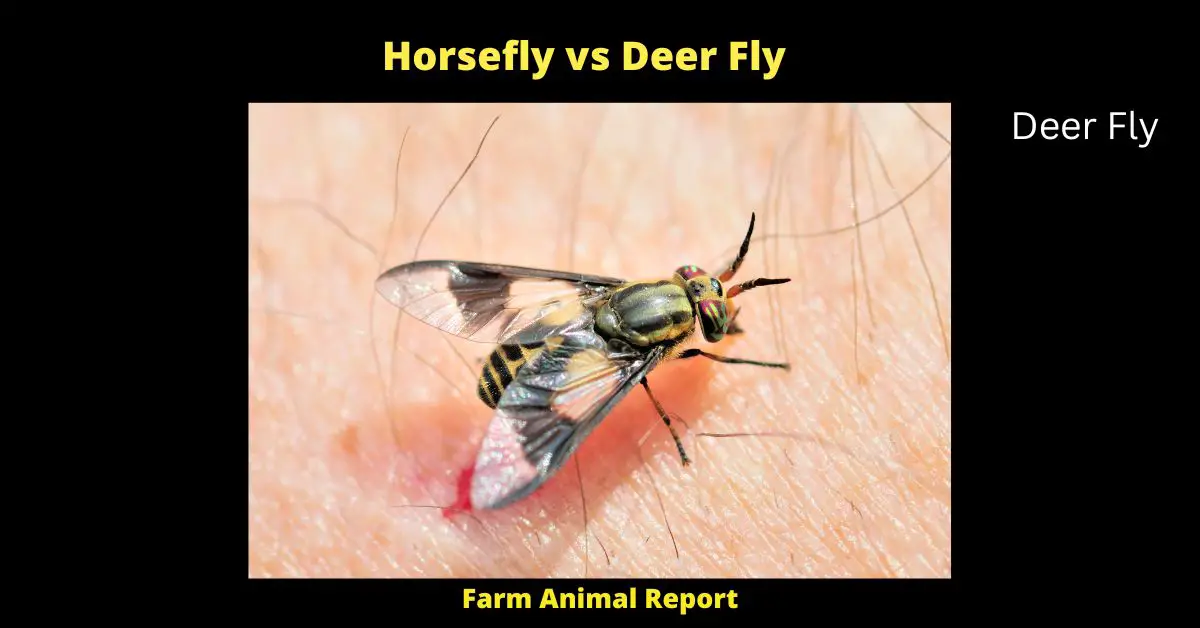
How to Get Rid of Horseflies and Deer Flies
Unfortunately, there is no surefire way to get rid of horseflies and deer flies completely. However, there are some things you can do to reduce their numbers. For example, try hanging up yellow sticky traps near areas where you often see these insects.
You can also try using an oscillating fan to keep them away from your outdoor activities. Finally, make sure to wear long sleeves and pants when you’re outside so that they have a harder time getting to your skin.
Final Thoughts – Horsefly vs Deer Fly
Horseflies and deer flies can be a real nuisance in the summertime. But what’s the difference between these two types of pesky insects? And more importantly, how can you get rid of them? By knowing what sets these two types of flies apart and taking some preventive measures, you can minimize your chances of being bitten all summer long.
God Bless Greg


